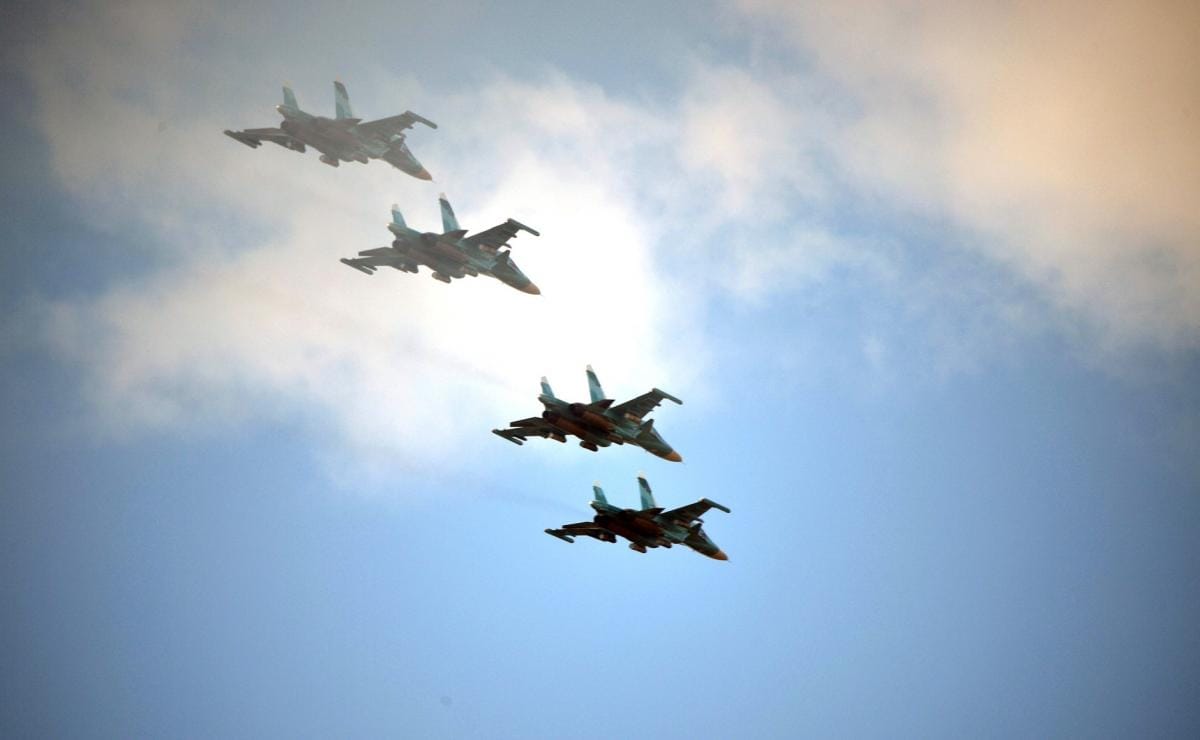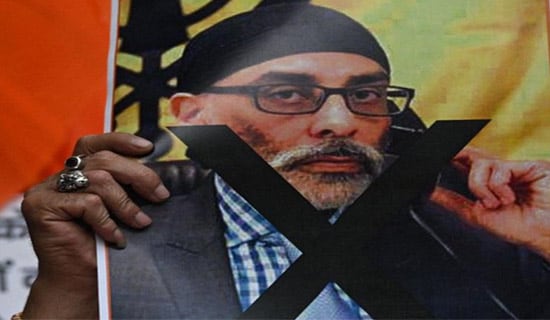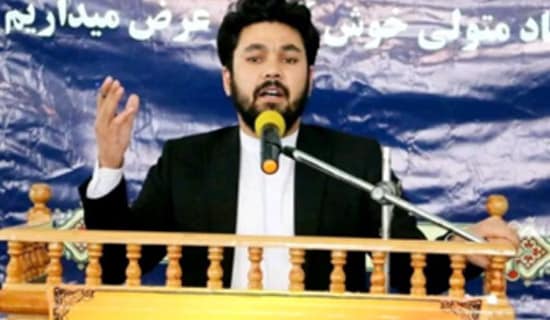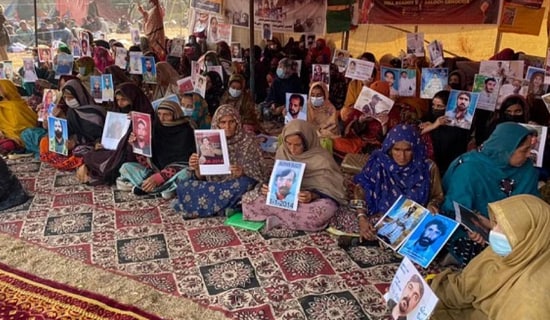The September 11-17 Vostok 2018 maneuvers were, as reported by the Kremlin, held in Russia's Far East and adjacent areas of the Pacific Ocean. They involved some 300,000 Russian service personnel, over 1,000 fixed-wing aircraft, helicopters, and drones, up to 36,000 tanks, armored personnel carriers and other vehicles, and up to 80 ships and support vessels.[1]
The maneuvers mostly aimed at assessing the readiness of troop control divisions, planning and conducting long-range troop redeployments, cooperation between ground forces and naval elements, and providing commanders and headquarters personnel with practical experience and streamlining their troop control skills.[2]
Several units participated in the exercises: motorized rifle and tank units of the Ground Forces, assault landing units of the Airborne Force, missile and artillery units, air defense units, tactical and army aviation units, long-range and military-transport aviation aircraft, a combat engineers' brigade and an NBC (Nuclear, Bacteriological, Chemical) regiment, special forces, drone operators, and logistics/technical support units.[3]
The Vostok 2018 maneuvers were the largest in the history of the Russian Army. Russian Defense Minister Sergey Shoigu said: "The drills resemble in some sense the Zapad 1981 drills, yet in another sense they are more large-scale. More than 1,000 aircraft, 300,000 servicemen, and almost all fire ranges of the Eastern and Central district were involved, together with the Pacific and Northern fleets and of course the Paratroopers corps."[4]
It is worth noting that the Zapad 1981 drills during the USSR's final decade were seen as preparation for an invasion of Poland, following the massive labor strikes called by Solidarity leader Lech Walensa, later Poland's president. Following the strikes, Polish ministerial council chairman General Wojciech Jaruzelski introduced martial law in the country, which was followed by massive arrests. Jaruzelski would later claim that the imposition of martial law preempted USSR militarily intervention in Poland.
Commenting on Vostok 2018, Frants Klintsevich, first deputy chairman of the Russian Federation Council's Defense and Security Committee, said: "The main goal of these grand military drills, the largest-scale drills since 1981, is to check the operational readiness of the Russian Armed Forces." He added: "Such a check-up will be quite handy in the context of a very difficult situation in the world. First and foremost, I mean the unprecedented pressure that the U.S. is exerting on Russia... The 1981 drills, in which I had the opportunity to participate, cooled down some hotheads in their time. Now the upcoming Vostok 2018 drills will fulfill the same role."[5]
On September 13, Russian President Vladimir Putin visited the Tsugol training range in the Trans-Baikal Territory, where he observed the Vostok 2018 military maneuvers. During his visit, he stated: "Russia is a peace-loving nation. We do not have and cannot have any plans of aggression. Our foreign policy is designed to promote productive cooperation with all interested countries. It is for this reason that 87 observers from 59 countries are present at these exercises. I welcome all of them here. To the Russian military personnel, I would like to say that our duty toward Russia, our Motherland, is to be ready to stand up for its sovereignty, security and national interests, and support our allies, if required. For this reason, we are committed to further strengthening our Armed Forces and supplying them with the most up to date weapons and equipment, as well as promoting international cooperation."[6]
It is also worth noting that the Chinese People's Liberation Army took part in the maneuvers.

Vostok 2018 military maneuvers (Source: Kremlin.ru)
In an article titled "Vostok 2018: The Country Is As Ready For A Large-Scale War With The West As In 1981," published in Novaya Gazeta, Russian military analyst Pavel Felgenhauer wrote that Vostok 2018 reflects the Russian government's "unorthodox way of thinking." He stated: "One must possess an unorthodox way of thinking in order to spend trillions on a standoff with a potential adversary (the U.S. and its allies), who will inexplicably decide to launch an assault on a tundra in Yamal or Chukotka and seize its resources instead of buying them if needed, or will try to occupy the Arctic for its mineral deposits, which one still has to find and then learn how to utilize under ice and water." He added that modern Russia's excessive militarization can hardly be explained by any rational defense considerations.
Felgenhauer also confronted the Kremlin's notion that Russia's is a peace-loving country and that thus Vostok 2018 was no threat to anyone: "This is what modern textbooks say: Russia has always fought only in just and defensive wars, but for some reason, after almost every war its territory increased until it became dozens of times greater than the original principality of Muscovy." He added: "Now we are in a new phase of territorial growth, which has continued for about 10 years already and which ill-wishers may call expansion. It is quite natural that the capabilities of the armed forces are being expanded at the same time, which is confirmed by Vostok 2018."
Below are excerpts of Felgenhauer's article:[7]
SUPPORT OUR WORK

Russian Chief Of General Staff Gerasimov Explained In 2013 That "The Threat Of A Large-Scale War May Significantly Increase" Until 2030
"Sergey Shoigu and his First Deputy – Chief of General Staff (CGS) Valery Gerasimov – took command of the Defense Ministry in November 2012. Both are generals of the army. One [i.e. Shoigu] is a civil engineer and has a PhD in Economics, and is a popular politician and talented administrator, who was Minister of Emergency Situations for over 20 years. The other [i.e. Gerasimov] is a career officer, a tankman, who gradually climbed all the rungs of military service until he reached the very top. Both are 63, and relatively soon they will have to leave military service. Of course, both can remain in civil service even after age 65. Shoigu can even keep the Defense Minister seat when he takes off his uniform. But the incumbent CGS, by definition, cannot be a retired civilian, and possible successors to Gerasimov are already being considered from among the military leaders who commanded the contingent in Syria.
"The September 11-17 Vostok 2018 maneuvers, unique in scale, are in fact a summarizing report and a showdown of achievements, primarily those of Gerasimov. This was his war game. Gerasimov personally held a briefing for foreign military attaches and journalists prior to the beginning of Vostok 2018 and placed special emphasis on the fact that this was not a regular drill, of which there are many every year on various levels, but 'maneuvers' involving the deployment of 'two opposing groups' on a battlefield scale. Simulated combat actions were not reflected only on the maps in top staff headquarters, as during regular strategic command-staff exercises; in addition, on every level of military administration, staff headquarters and commanders directed the actions of the troops in unfamiliar training grounds after their long-range redeployment.
"Previous maneuvers on a similar scale, according to Gerasimov, were held in 1981 (Zapad 81, over 20 divisions), in the most terrible period of the Cold War, when the so-called proxy wars between the U.S.S.R. and the U.S. raged practically everywhere – in Afghanistan, in the Middle East, in Africa, and in Nicaragua. Europe was quiet, but a global nuclear conflict seemed inevitable to many. Only after the Gorbachev-Reagan summit in 1986 in Reykjavik did the worldwide fear and tension begin to abate, and the Cold War and global confrontation dwindled to nothing – only to return now full force, as if the past 30 years had never been. Gerasimov, who graduated from armor school with honors in 1977, was then busy making a successful military career.
"In September 2018, the mock confrontation was between the following: on the one hand, the Central Military District (CMD) and the Northern Fleet, and on the other, the Eastern Military District (EMD) and the Pacific Fleet. As part of the Vostok 2018 exercise, units and formations of six combined arms armies (2nd, 5th, 29th, 35th, 36th, and 41st), as well as of two armies of the Aerospace Forces (11th and 14th), and units of paratroopers and military transport aviation were repositioned and deployed for simulated combat. According to Gerasimov, a total of 297,000 servicemen took part in Vostok 2018, in addition to thousands of tanks and other machinery, aerial vehicles of all kinds, and Navy ships and vessels – all told, more than during Zapad 81.
"The primary goal of these maneuvers is to test the ability of the troops to move over long distances, to form diversified combat-capable groups, and to practice the combat supply and control systems. Gerasimov recalled that in 2013, when he was just beginning, the armed forces were slow-moving and not very combat-ready. It is then, in February 2013, that Gerasimov publicly explained that, according to the assessment of the General Staff, 'the threat of a large-scale war may significantly increase over the period until 2030,' and that leading world powers will fight 'for fuel and energy resources, markets for their products, and living space.' This assessment speaks about the so-called future 'resource wars,' which can grow into a global nuclear war.
"One Has To Possess An Unorthodox Way Of Thinking In Order To Spend Trillions On A Standoff With A Potential Adversary (The U.S. And Its Allies), Who Will Inexplicably Decide To Launch An Assault On A Tundra"
"Before Vostok 2018 began, Gerasimov boasted that combat readiness and level of training have significantly increased since 2013.
"In addition, tens of trillions have been spent on rearmament, and coastal defense forces have been deployed (including in the depths of the Arctic), as well as a division in Chukotka – where previously polar bears were the only serious threat.
"Of course, not all 300,000 men were moved over long distances during Vostok 2018, but the bottom line is clear: Thanks to the relentless efforts of Shoigu and Gerasimov under the guidance of President Vladimir Putin, the country is again ready for a large-scale war, just like it was in 1981 or even better. In 2016, after the Kavkaz 2016 strategic exercise, which was also very large-scale and in which the Crimea was the center of all efforts, Gerasimov told journalists that the Army and the Airborne Forces had 66 constantly ready battalion-based tactical groups (BTG) – one in every regiment and brigade. BTGs came into existence during the Chechen wars; they are battalions augmented with tanks, other armored vehicles, howitzers, mortars and multiple launch rocket systems, as well as sappers, communications officers, and air defense systems. A mobile BTG is capable of acting independently, in isolation from the other forces, or as part of a group. This is the way the Russian army currently fights.
"In 2016, Gerasimov announced plans to double the number of constantly ready BTGs, and two years later reports on success: 'Today, our Land Forces and Airborne Forces have 126 BTGs numbering 800-900 men each, manned with contracted soldiers in constant readiness,' with two or three BTGs in each regiment or brigade. For example, NATO managed to deploy four multinational BTGs in the Baltic States and in Poland to deter our 126. There is mass deployment of new, modernized T-72B3 tanks in the country – they cost around $1 million apiece. Today, the Russian military has more tanks than any other country, including China, and more than all the NATO countries put together.
"For Putin, up to 25,000 of our troops and a Chinese mechanized brigade numbering 3,200 men with tanks and helicopters (as well as a Mongolian platoon) were gathered at the Tsugol training ground in Zabaykalsky Krai for the culmination of Vostok 2018. Units of three armies of EMD, together with the Chinese and the Mongols, confronted units of two armies of CMD. Then the troops were lined up in the steppe with tanks and vehicles as far as the horizon for Putin, as well as for foreign military attaches and journalists specially brought to Tzugol (even though there was no apparent need for that) so that they would see and fear the abundance of troops and machinery and our military closeness with China. Then there was a joint parade. Just like in 1981, only China was a potential adversary then; now, as a result of the Western sanctions, it has become Russia's main foreign trade partner, which supplies investment goods – machinery and equipment – as well as consumer goods in exchange for raw materials.
"One has to possess an unorthodox way of thinking in order to spend trillions on a standoff with a potential adversary (the U.S. and its allies), who will inexplicably decide to launch an assault on a tundra in Yamal or Chukotka and seize its resources instead of buying them if needed, or will try to occupy the Arctic for its mineral deposits, which one still has to find and then learn how to utilize under ice and water. Modern Russia's excessive militarization can hardly be explained by any rational defense considerations. It is well known from our country's history that maintaining such a high level of combat readiness for a long time is difficult. The technical resources will be exhausted, replacement and maintenance costs will increase, the economy will come apart at the seams, and the isolation from the outer world will grow – again, just like in 1981, in the golden age of national militarism and the dying bloom of the Soviet military industrial sector.
"Of course, both Gerasimov in Moscow and Putin at the Tsugol training ground insisted that Vostok 2018 was not a threat to anyon, that Russia is a 'peace-loving country' which does not and cannot have any aggressive plans. Yes, this is what modern textbooks say: Russia has always fought only in just and defensive wars. But for some reason, after almost every war, its territory increased until it became dozens of times greater than the original principality of Muscovy. Now we are in a new phase of territorial growth, which has continued for about 10 years already, and which ill-wishers may call expansion. It is quite natural that the capabilities of the armed forces are being expanded at the same time, which is confirmed by Vostok 2018."




